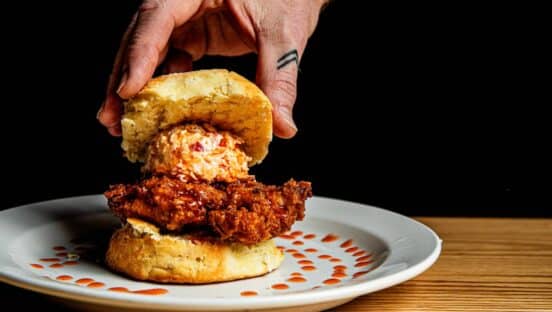Despite the crowded pizza category, Toppers Pizza is taking its share of the more than $40 billion pie.
System-wide sales increased by more than 40 percent for both company-owned and franchised units in the first quarter of 2013, and same-store sales for company units were up 13.59 percent in the same period.
Franchise units saw a same-store sales increase of 12.58 percent in Q1, compared to the first quarter of 2012.
Though some of this growth can be attributed to the fact that the brand added 16 units over the past year and comp sales have grown by double digits, CEO and president Scott Gittrich says brand familiarity is exploding.
“The awareness of what we do and who we are continues to grow and grow, and more and more consumers love us and become loyal to us,” he says.
The brand’s penchant for offering products not often found on competitors’ menus also gives the brand a leg up, Gittrich says. In fact, 70 percent of Toppers' sales comes from items like its signature pizzas and Topperstix, a breadstick-like product that comes in varieties like Tacostix, with taco meat and Cheddar and Mozzarella cheeses.
“We come to a market and we look enough like the big guys that people can tell, ‘Hey, I can call Toppers instead of Pizza Hut on Friday nights,’” he says. “So they might come to us first for that pepperoni pizza, but then they come to find that we’ve got this variety on our menu that’s unusual in the segment. And once they start burrowing into our handmade menu, then that’s where we think we get them.”
Growth in the first quarter can also be attributed to a bit of menu engineering, in which the brand took a look at what sells, the margin on these products, and how to drive purchases on the most profitable items, says Scott Iverson, vice president of marketing.
Through this menu engineering, check averages have gone up by almost $1.25, while the number of transactions has increased, too.
“We just have more and more people coming to us, and they’re spending more based on these pricing strategies that we’ve put into place,” Iverson says.
While the brand grew by 40 percent last year in terms of units, expansion will only continue to speed up, Gittrich says. Toppers plans to open nearly 20 stores in the next year, as well as a projected 25 units in 2014.
He says the goal is to reach 150 locations by 2015 and 500 units by 2020.
Much of the brand’s growth is centered in the middle of the U.S., in states like Nebraska, Minnesota, Illinois, Indiana, and Michigan, with growth in outliers like the Carolinas and Texas. The first location in Arkansas will debut in the third quarter of 2013.
“We have a record number of leads, which I suppose is not surprising because it’s a momentum business,” he says. “When you open stores in Chicago, you immediately start getting a lot of interest in Chicago and you continue to build with franchise partners in that area.”
Toppers can also attribute some of this interest—both from franchisees and consumers—to its aggressive marketing approach.
The brand kicked off its first regional TV campaign recently, which it also supported with radio spots and localized direct mail, Iverson says.
He says the TV campaign, which ran across 12 DMAs, helped boost online ordering by more than 6 percent.
“These campaigns were designed to get the Toppers name out there and show people that we’re a more fun alternative to pizza delivery than some of the big, boring chains,” Iverson says.
Though many of the brand’s competitors focus on product in advertising spots, he says Toppers steered clear of this approach.
“We take a little bit of an anti-category stance there, where it’s more important to us that we talk about the experience people have with Toppers Pizza and how that is different,” Iverson says. “We try to be a little fun and playful and give somebody a laugh and a smile, because at the end of the day, pizza is a fun meal to share with family and friends.”
Perhaps that’s one reason the brand has seen success with the Millennial generation—a consumer segment Toppers reaches through social media and engagement.
“A lot of brands talk at customers,” Iverson says. “We try to involve our fans in marketing and messaging communication.”
Whether it’s through “random posts” that get a conversation going or promotions like its March Madness, bracket-style pizza competition, Iverson says the brand tries to be a buddy to its consumers.
“It’s more like fans are communicating with one of their friends than they are with a company or a brand,” he says. “If we can get in the hearts and minds of these folks, they are the brand ambassadors. They are the ones that will go out and spread the Toppers love through word of mouth and tell other people about it.”
By Mary Avant




